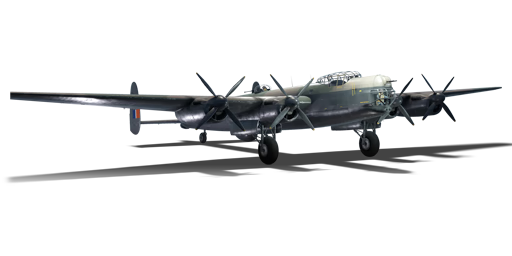



By late 1943, the Avro Lancaster had proved its worth as a capable heavy bomber, although there were still shortcomings in the design that needed to be ironed out, particularly its poor top speed and defensive armament. As such, Avro started working on an improved version of the Lancaster in early 1944 per Specification B.14/43, which would later be classified as its own model under the name Avro Type 694 Lincoln. Initially, the two prototypes were designated Lancaster Mk IV and Lancaster Mk V due to using different models of the Merlin engines before being redesignated the Lincoln Mk I and Lincoln Mk II, respectively. Despite the Lincoln being a significant upgrade, the debut of the American B-29 Superfortress rendered it obsolete before it even made its first flight on 9 June 1944. This, combined with the end of World War II and the RAF’s decision to loan the B-29 at the onset of the Cold War resulted in the Lincolns being relegated to colonial duties. After being deployed to suppress the Kenyan and Malayan insurgents in the 1950s, the Lincolns were eventually replaced by the jet-powered “V-bomber” series. In total, 604 Lincolns were built, and it would later spawn its own derivatives, such as the Avro Shackleton ASW aircraft.
The Lincoln B Mk II was introduced in Update 1.67 "Assault". Being a successor of the Lancaster, the Lincoln retains the key features of the Lancaster with improvements, most notably its significantly stronger defensive armament of two Hispano autocannons and four Browning MGs, as well as improvements in flight characteristics. The Lincoln’s high acceleration allows it to either climb up high or dive fast to deliver its massive payload. However, the Lincoln still retains the weak airframe of the Lancaster, which means it is still incapable of taking damage. As such, it is advisable to stay away from enemy interceptors and engage them at long ranges when they manage to catch you.
flaps
flaps
flaps
brake
| Belt | Belt filling | Armor penetration (mm) at a distance: | |||||
|---|---|---|---|---|---|---|---|
| 10 m | 100 m | 500 m | 1000 m | 1500 m | 2000 m | ||
| HEI/HEI/P/T | 17 | 15 | 11 | 7 | 5 | 0 | |
| HEI/AP-T/AP-T | 37 | 35 | 25 | 16 | 10 | 7 | |
| AP-T/HEI/HEI | 37 | 35 | 25 | 16 | 10 | 7 | |
| Belt | Belt filling | Armor penetration (mm) at a distance: | |||||
|---|---|---|---|---|---|---|---|
| 10 m | 100 m | 500 m | 1000 m | 1500 m | 2000 m | ||
| T/Ball/Ball/I/AP-I | 26 | 24 | 18 | 12 | 8 | 5 | |
| AP/AP/AP/T/I | 30 | 27 | 20 | 13 | 9 | 6 | |
| AP-I/AP-I/AP-I/T | 26 | 24 | 18 | 12 | 8 | 5 | |












Flight performance | |
|---|---|
Survivability |
|---|
Weaponry | ||
|---|---|---|